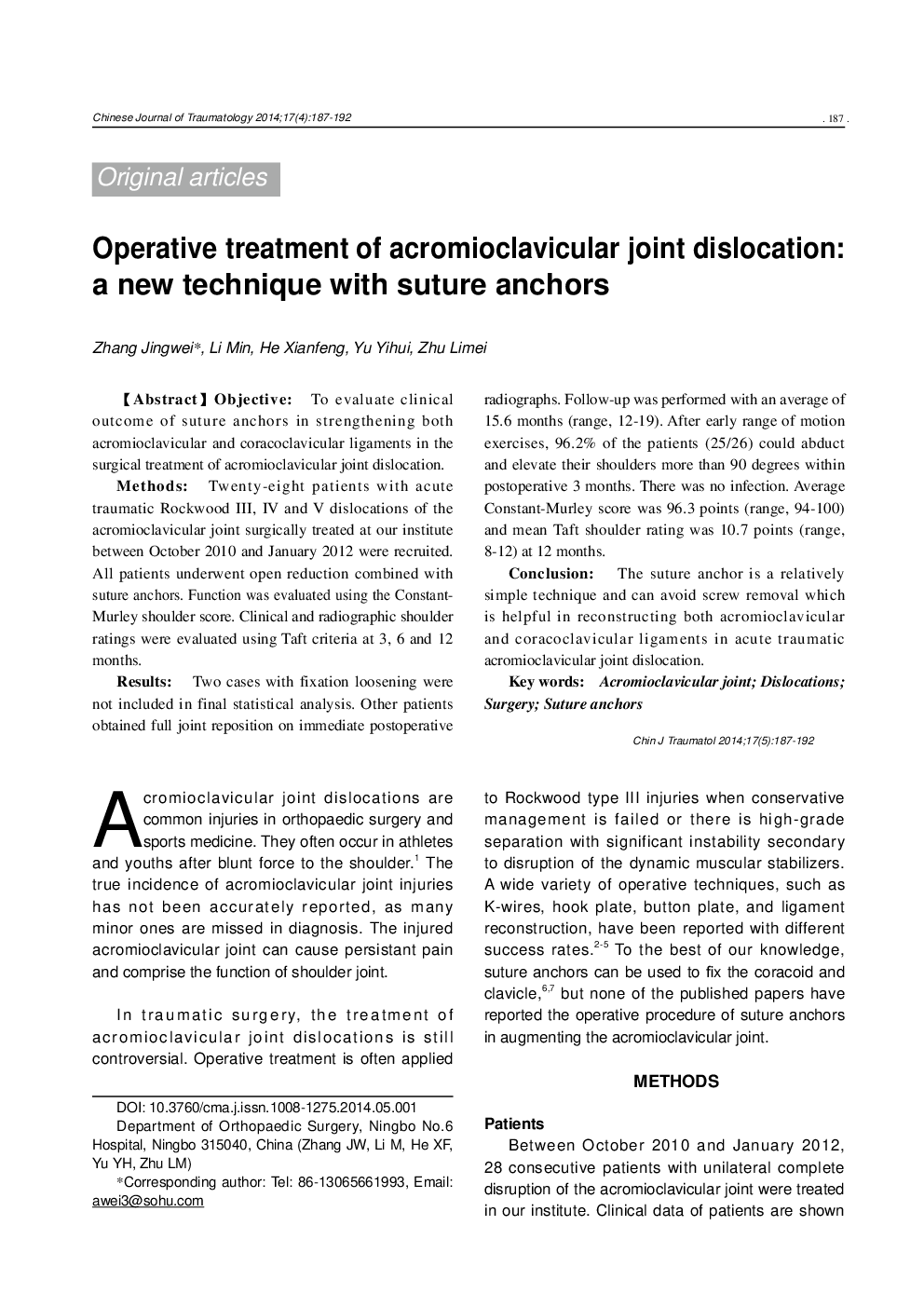| Article ID | Journal | Published Year | Pages | File Type |
|---|---|---|---|---|
| 3107239 | Chinese Journal of Traumatology | 2014 | 6 Pages |
ObjectiveTo evaluate clinical outcome of suture anchors in strengthening both acromioclavicular and coracoclavicular ligaments in the surgical treatment of acromioclavicular joint dislocationMethodsTwenty-eight patients with acute traumatic Rockwood III, IV and V dislocations of the acromioclavicular joint surgically treated at our institute between October 2010 and January 2012 were recruited. All patients underwent open reduction combined with suture anchors. Function was evaluated using the Constant-Murley shoulder score. Clinical and radiographic shoulder ratings were evaluated using Taft criteria at 3, 6 and 12 months.ResultsTwo cases with fixation loosening were not included in final statistical analysis. Other patients obtained full joint reposition on immediate postoperative radiographs. Follow-up was performed with an average of 15.6 months (range, 12-19). After early range of motion exercises, 96.2% of the patients (25/26) could abduct and elevate their shoulders more than 90 degrees within postoperative 3 months. There was no infection. Average Constant-Murley score was 96.3 points (range, 94-100) and mean Taft shoulder rating was 10.7 points (range, 8-12) at 12 months.ConclusionThe suture anchor is a relatively simple technique and can avoid screw removal which is helpful in reconstructing both acromioclavicular and coracoclavicular ligaments in acute traumatic acromioclavicular joint dislocation.
